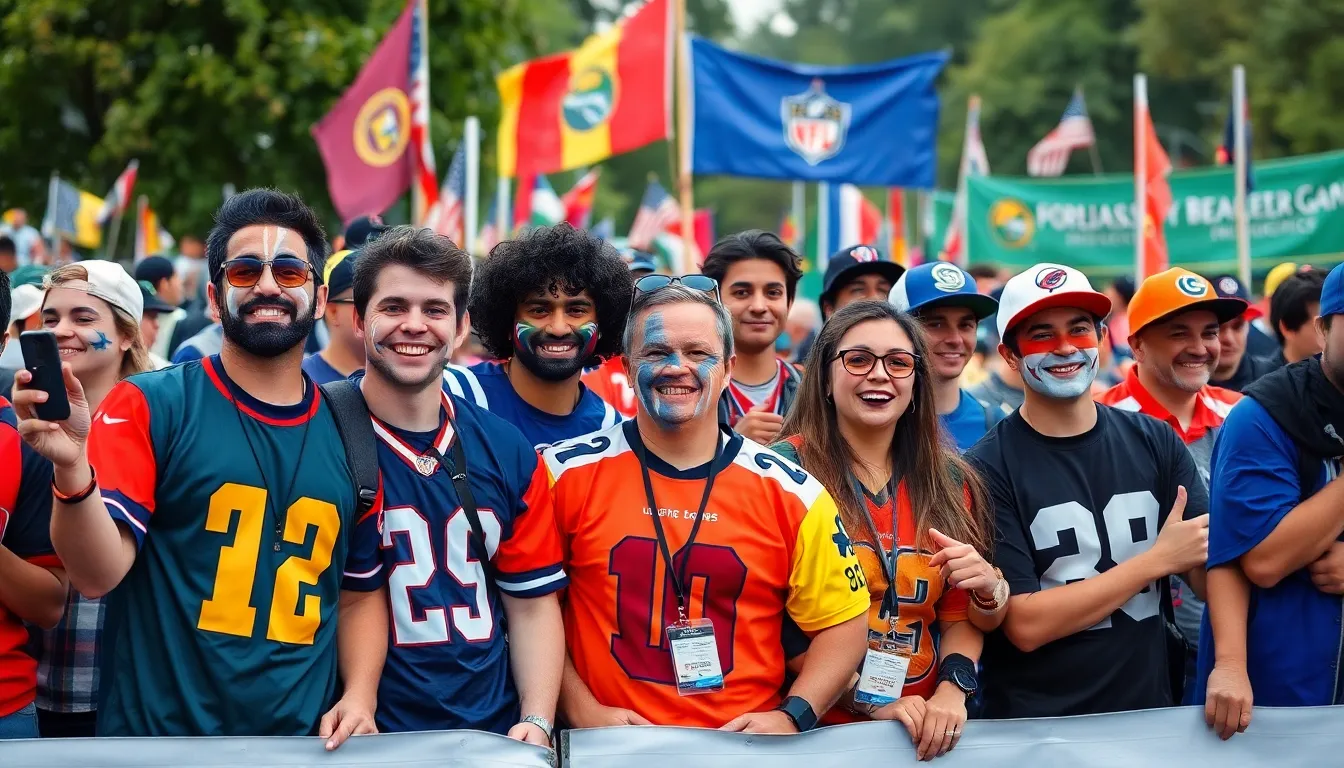As the seasons change, so do the sports that capture fans’ hearts and wallets. From the thrill of summer baseball to the cozy excitement of winter hockey, seasonal sports marketing is like a well-timed touchdown—perfectly executed and impossible to ignore. Brands that tap into the rhythm of the sports calendar can score big, turning casual fans into loyal customers faster than you can say “play ball!”
Seasonal Sports Marketing
Seasonal sports marketing focuses on leveraging the popularity of specific sports tied to different times of the year. This approach enhances brand visibility while aligning marketing strategies with seasonal sports events.
Definition and Importance
Seasonal sports marketing involves creating targeted campaigns around particular sports seasons. Brands engage fans through promotions, sponsorships, and events relevant to sports like football, basketball, and soccer. Aligning marketing efforts with seasonal sports fosters stronger connections. Effective campaigns reach specific audiences at peak interest times, driving higher engagement and customer loyalty.
Key Characteristics
Key characteristics of seasonal sports marketing include timing, audience targeting, and promotional activities. Timing plays a crucial role, as campaigns must coincide with the sports calendar. Audience targeting focuses on demographical insights, allowing brands to tailor messages to fan interests. Promotional activities might include special offers, event sponsorship, or social media campaigns, creating excitement that resonates with fans. These characteristics ensure effective communication by aligning marketing initiatives with fan expectations and seasonal trends.
Strategies for Effective Seasonal Sports Marketing

Effective seasonal sports marketing involves a strategic approach tailored to resonate with audiences throughout the year. Brands can optimize their engagement by focusing on specific sports and their seasons.
Targeting Seasonal Audiences
Targeting seasonal audiences involves identifying fan demographics connected to specific sports. Brands achieve this by analyzing data related to audience behaviors and preferences. For instance, soccer campaigns may focus on youth and families during spring, while basketball promotions can engage urban populations in winter. Understanding when fans are most passionate about their favorite teams enables brands to tailor messaging appropriately. Effective communication helps build loyalty and encourages participation in promotions and events.
Leveraging Seasonal Trends
Leveraging seasonal trends allows brands to tap into popular cultural moments associated with specific sports. Seasonal merchandising aligns campaigns with events like playoffs, championships, or tournaments. Data shows that sales often peak during these times, indicating heightened consumer interest. Brands engaging fans through social media promotions and strategic partnerships with athletes can maximize visibility. Utilizing seasonal hashtags and engaging content directly related to ongoing sports events fosters a sense of community among fans. By staying current with trends, campaigns remain relevant and impactful.
Examples of Successful Seasonal Sports Marketing Campaigns
Seasonal sports marketing campaigns illustrate the effectiveness of aligning brand strategies with specific sports events. Brands successfully leverage seasonal themes to connect with fans and enhance engagement.
Case Study 1: Winter Sports
Major sports brands capitalize on winter sports by creating targeted campaigns around events like the Winter Olympics. For instance, a well-known outdoor clothing company launched an initiative featuring athletes as brand ambassadors, promoting winter gear through social media and videos. These campaigns highlighted the athletes’ journeys while encouraging fan participation through contests and giveaways. The overall reach surged, resulting in a 30% increase in sales during the winter season.
Case Study 2: Summer Sports
Summer sports events, such as the FIFA World Cup, offer brands ample opportunities to create excitement. A global beverage brand partnered with a popular soccer tournament to enhance visibility. They implemented limited-edition packaging and offered special promotions during the event. Engagement soared via social media, where fans shared their experiences and interacted with the brand. As a result, the campaign led to a remarkable 25% increase in customer interaction and brand loyalty over the summer months.
Measuring the Impact of Seasonal Sports Marketing
Measuring the effectiveness of seasonal sports marketing involves evaluating various metrics. Brands must focus on concrete data points to assess performance.
Key Performance Indicators
Key performance indicators (KPIs) serve as vital tools for analyzing the success of seasonal marketing campaigns. Metrics such as sales growth, brand engagement rates, and social media interactions provide insights into campaign effectiveness. An increase in sales figures during specific events, like the Super Bowl, reflects successful promotions. Engagement rates indicate how well the target audience responds to campaigns. Tracking these metrics allows brands to adjust strategies for optimal results based on performance data.
Analyzing Consumer Engagement
Consumer engagement analysis reveals how audiences interact with seasonal marketing efforts. Social media mentions, shares, and comments offer valuable feedback. Brands assess these interactions to determine fan sentiment and interest levels. Surveys can also gauge brand perception before and after campaigns. High engagement levels during significant sports events highlight effective strategies. Analyzing digital traffic and conversion rates further informs brands about audience behavior. This information helps refine future marketing initiatives to maintain strong connections with fans.
Conclusion
Seasonal sports marketing presents a unique opportunity for brands to connect with fans in meaningful ways. By aligning marketing efforts with the sports calendar and understanding audience behaviors, brands can create campaigns that resonate deeply with their target demographics.
The success of tailored strategies during peak seasons not only enhances brand visibility but also fosters loyalty among consumers. As brands continue to innovate and adapt their approaches, leveraging seasonal trends will remain crucial for maximizing engagement and driving sales.
Ultimately, a well-executed seasonal sports marketing strategy can transform casual fans into devoted customers, ensuring long-term success in a competitive landscape.

